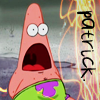

- Watercolor painting, in its wider sense, refers to all pigments mixed with water rather than with oil and also to the paintings produced by this process. The advantages of watercolor lie in the ease and quickness of its application, in the transparent effects achievable, in the brilliance of its colors, and in its relative cheapness.
- Aquarelles have a delicacy difficult to achieve in oil and are equally flexible, lending themselves to immediate expression of a visual experience. Their handling demands considerable skill as overpainting of flaws is usually impossible.
- Watercolor was traditionally a comparatively perishable medium, vulnerable to sunlight, dust, and contact with glass surfaces, but the use of modern pigments has made it much more stable.
- Watercolor Flat Wash - A flat wash is one that is a solid color from the top to the bottom of the page or area in which you need a flat color. Watercolor Graded Wash - Each stroke should be slightly lighter than the one before.
- Glazing With Watercolor- So many beginning artists are afraid to put color on the paper. We all want to jump right in and paint a subject before we think about what is going on around it.
- Wet-in-Wet Watercolor Technique - Applying color to a wet surface. Usually I wet the paper or surface first, and while it is still wet, I apply the first color of the painting.
- Dry Brush Watercolor Techniques - This is a detail technique, when you do not use much water on the brush, but apply the color with a brush that is not dripping wet. You have quite a bit of control with this method, but it should be used for textures and detail.
by RussDonIvanClarDesJohn
